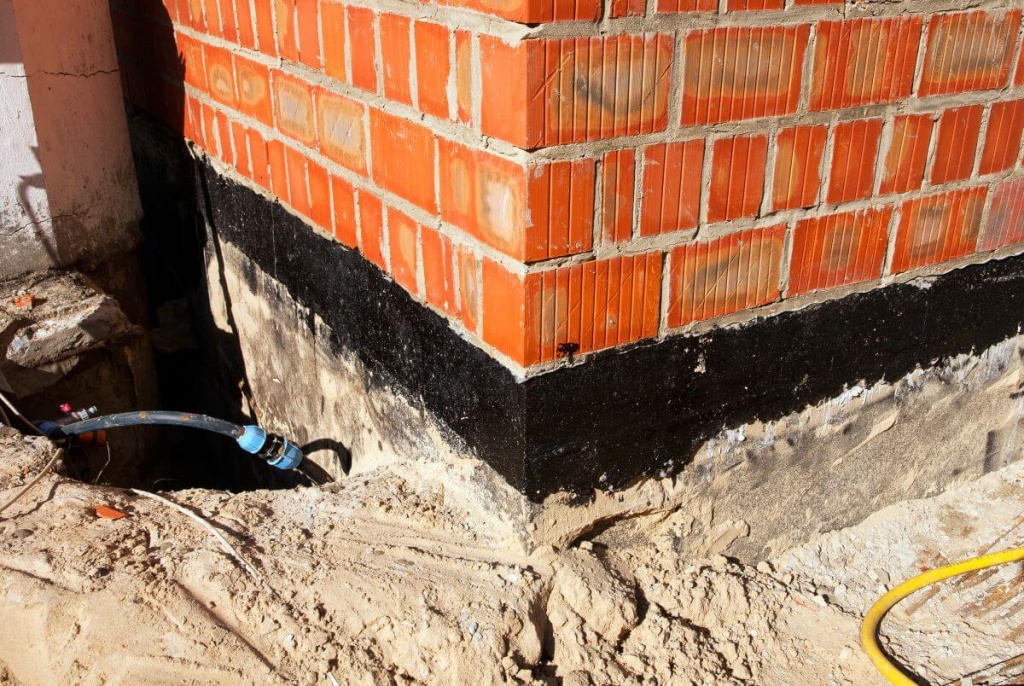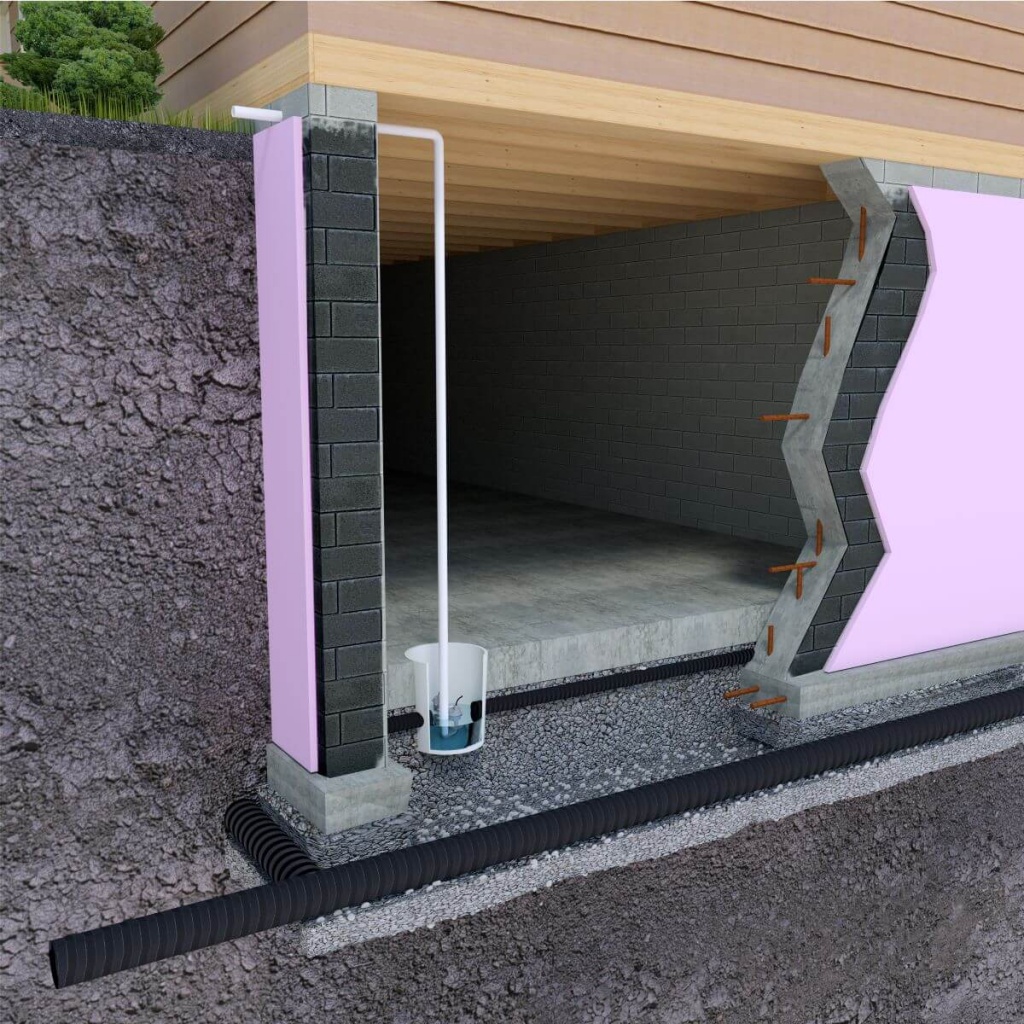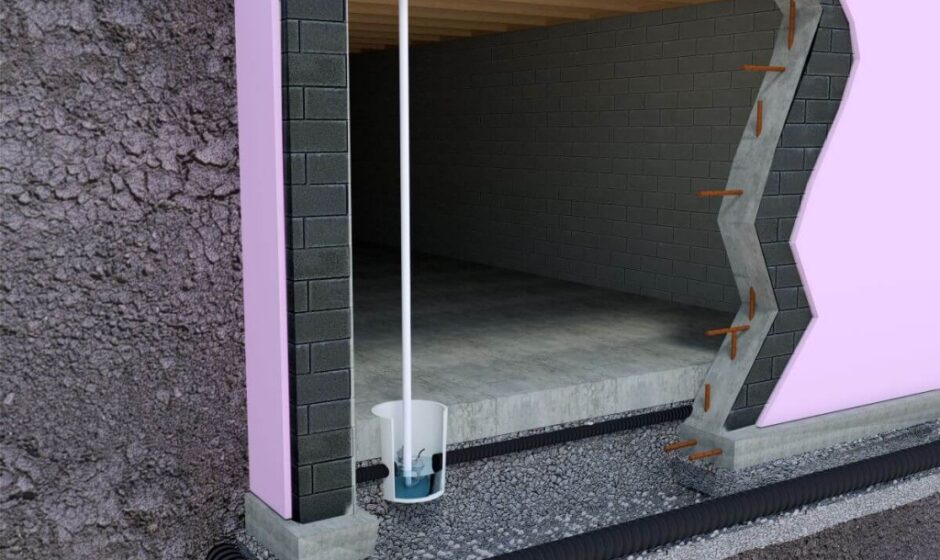Basement waterproofing is a mandatory type of work if you want the basement in the house to retain its functionality for a long time, and the supporting structures of the building not to lose their strength. You can carry out the work yourself; in most cases, this is a fairly simple task thanks to the use of modern and high-quality materials. Let’s take a closer look at how to make high-quality moisture protection and what to use for this.
WHY IS WATERPROOFING WORK CARRIED OUT?
When in contact with concrete, groundwater can have a negative impact on structural monolithic concrete, gradually destroying it. If the site contains groundwater located relatively close to the soil surface, then sooner or later you will have to deal with its impact. Without taking appropriate measures, the following problems may occur:
- destruction of cement stone – water gradually washes away the mineral binding components, as a result of which leaks appear, and the material begins to crumble and crumble;
- the appearance of cracks as a result of freezing – moisture accumulated inside during freezing and expansion in winter will lead to the appearance of microcracks, which will further expand with each season;
- corrosion of reinforcement – when moisture gets inside, it destroys the surface layers of the reinforcement, triggering corrosion processes, which weakens the load-bearing properties of the monolith, leading to destruction or subsidence;
- the appearance of fungus, mold, and unpleasant odor – an increase in air humidity in the basement will inevitably lead to the development of a harmful and dangerous atmosphere for humans. It causes the appearance and exacerbation of allergic reactions, in addition, the room can no longer be used as a pantry or warehouse.
Waterproofing the basement from groundwater will solve the problem.

METHODS FOR WATERPROOFING A BASEMENT FROM GROUNDWATER
To protect against moisture, it is necessary to create a barrier separating layer that prevents contact of concrete with the external environment. To achieve this, the following types of waterproofing work are carried out:
- external – with the help of special barrier materials, the surface of the monolith that is in contact with the ground and is most exposed to risks is covered. It is worth carrying out work at the construction stage to avoid problems in the future;
- internal – the internal part of the foundation, or rather the walls and floor of the basement, is treated with the same or similar materials to prevent the formation of leaks or the transfer of moisture through the pores of the concrete.
The best solution would be to carry out comprehensive work, especially if the site has high groundwater levels, is periodically flooded, or is located in a lowland relative to the surrounding landscape.
MIXTURES USED
Waterproofing from water is carried out using barrier materials of the following type:
- penetrating – applied to the surface, they tend to penetrate the internal pores of concrete, filling them and eliminating the movement and accumulation of moisture;
- coating – also applied to the surface to obtain a seamless coating that can reliably protect concrete from external moisture, even in direct contact with it.
The materials produced can be cement-based, cement-polymer, or polymer-based. They are convenient and easy to use. They are supplied in the form of a dry mixture for preparing a solution or in a liquid, ready-to-use state.

HOW TO MAKE EXTERNAL WATERPROOFING OF A BASEMENT FROM WATER
The most important point is the protective treatment of the outer part of the foundation, which eliminates contact with groundwater and minimizes the number of leaks and the overall negative impact in the future. The work takes place in several main stages:
- cleaning the surface – at the initial stage, you will need to remove any contaminants from the concrete, be it paint, traces of plaster, or other building materials. If the treatment is carried out on an already built object with a previously dug foundation, then you need to wait until it dries and thoroughly clean the surface of the soil;
- leveling and eliminating defects – the surface should be as smooth as possible. To do this, it is necessary to repair chips, holes, and voids left after the formwork was poured or that appeared during the work. If the foundation is of a block type, you need to seal and level the seams well, eliminating voids;
- applying a waterproofing composition – for work you can use coating or penetrating materials based on cement and bitumen. Dry cement mixtures are first mixed with water to obtain a paste-like mixture, which is applied using a spatula in a thin layer evenly over the entire surface. If bitumen mastics are used, it is best to use a paintbrush to apply them. When working with mastics, it is better to process in two layers to eliminate missing areas.
Thus, it is necessary to treat the entire outer part of the foundation, as well as, if possible, horizontal surfaces where masonry will be carried out in the future.

INTERNAL WATERPROOFING
Internal waterproofing is carried out using the same technology as external waterproofing. However, certain points need to be clarified further. So, if there are leaks in the basement walls, they must be sealed in such a way as to remove damaged and dilapidated material. Next, the embroidered holes and joints are sealed with a repair compound on a concrete or polymer base, and only after it has hardened, treatment with a coating mixture or mastic is carried out. Please note: in the basement, it is necessary to waterproof the floor, since if there is a separating insulating lining under the concrete, moisture can penetrate through the floor. For procedures, you can use the same materials and application technology.

Read more: VERTICAL FOUNDATION WATERPROOFING



